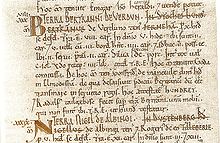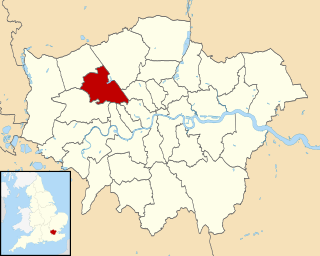
Brent is a borough in north-west London. It is known for landmarks such as Wembley Stadium, the Swaminarayan Temple and the Kiln Theatre. It also contains the Welsh Harp reservoir and the Park Royal commercial estate. The local authority is Brent London Borough Council.

Aylesford is a village and civil parish on the River Medway in Kent, England, 4 miles (6 km) northwest of Maidstone.

Southcourt is a housing estate in Aylesbury, Buckinghamshire, England. Building commenced in the early 1920s through to the mid-1930s and only stopped because of the Second World War. It was turned into a post war housing estate during the years of 1946 and 1955. The area is named after the pig farm over which the housing estate was built.

Bedgrove is one of the housing estates of the modern town of Aylesbury in Buckinghamshire, though it takes its name from a farm and hamlet that stood in the area until the area was cleared for building in the late 1950s. At the time it was built it was the largest housing estate of its kind in the country. The housing estate is on the south side of the town. The farm was where Pevensey Close now stands.

Great Missenden is an affluent village and civil parish in the Misbourne Valley in the Chiltern Hills in Buckinghamshire, England, situated between the towns of Amersham and Wendover. It adjoins the village of Little Kingshill, and is a mile from Little Missenden and the village of Prestwood.
Farnham Common is a village in Buckinghamshire, England, 3 miles north of Slough and 3 miles south of Beaconsfield, on the A355 road. It adjoins the ancient woodland of Burnham Beeches, has an area of 2.5 miles and a population of around 6,000. It is in the civil parish of Farnham Royal.

Hazlemere is a large village and civil parish in Buckinghamshire, England, 2.5 miles (4.0 km) northeast of High Wycombe on the A404 leading to Amersham, which intersects with the B474 at Hazlemere. To the north of the village is the hamlet of Holmer Green, which is in the civil parish of Little Missenden.

Holmer Green is a village in the civil parish of Little Missenden, in Buckinghamshire, England. It is next to Hazlemere, about 3 miles (5 km) south of Great Missenden.

Nash is a village and also a civil parish in Buckinghamshire, England, within the Buckinghamshire Council unitary authority area. It is in the north of the county, about 5 miles (8.0 km) south-west of Milton Keynes and 4 miles (6.4 km) east of Buckingham. According to the 2011 census, the population total of Nash was 417.

Seer Green is a village and civil parish in Buckinghamshire, England. It is in the Chiltern Hills, 1.8 miles (2.9 km) east-north-east of Beaconsfield and 1.8 miles (2.9 km) south-west of Chalfont St Giles.

Stoke Poges is a village and civil parish in south-east Buckinghamshire, England. It is centred 3 miles (4.8 km) north-north-east of Slough, its post town, and 2 miles (3.2 km) southeast of Farnham Common.
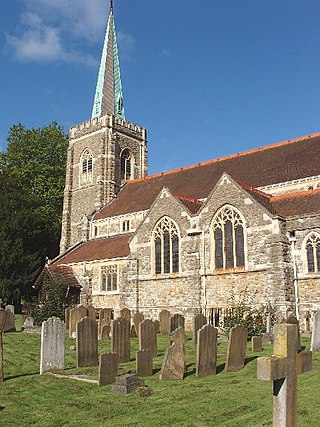
Taplow is a village and civil parish in the Unitary Authority of Buckinghamshire, England. It sits on the left bank of the River Thames, facing Maidenhead in the neighbouring county of Berkshire, with Cippenham and Burnham to the east. It is the south-westernmost settlement in Buckinghamshire.

Prittlewell is an inner city area and former civil parish in Southend-on-Sea, in the ceremonial county of Essex, England. Historically, Prittlewell is the original settlement of the city, Southend being the south end of Prittlewell. The village of Prittlewell was originally centered at the joining of three main roads, East Street, West Street, and North Street, which was extended south in the 19th century and renamed Victoria Avenue. The principal administrative buildings in Southend are located along Victoria Avenue, although Prittlewell is served by Prittlewell railway station.

Charing is a village and civil parish in the Ashford District of Kent, in south-east England. It includes the settlements of Charing Heath and Westwell Leacon. It is located at the foot of the North Downs and reaches up to the escarpment.

Kings Hill is a civil parish in the borough of Tonbridge and Malling in Kent, England. It is one of several new villages built in Kent since the 1950s. Development started in 1989 near West Malling, on land previously occupied by RAF West Malling. The plan was for a multi-purpose site of both residential and office/business space.
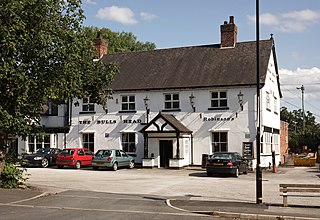
Hale Barns is a village near Altrincham in Greater Manchester, England, 7 miles (11 km) south-west of Manchester city centre, 2 miles west of Manchester Airport and close to the River Bollin. At the 2011 census, the village had a population of 9,736.

Southchurch is a suburb and former civil parish in Southend-on-Sea in the ceremonial county of Essex, England. England. In 2011 the ward had a population of 9,710.
Godinton is a suburb of Ashford, Kent in England, with its stately home Godinton House within its outskirts.
Park is a local government ward within Tunbridge Wells borough in Kent, England. It is made up of the Camden Park estate, the formerly separate village of Hawkenbury containing a regional Land Registry, Dunorlan Park and the Forest Road area, off which can be found the Tunbridge Wells Cemetery & Crematorium and Nevill Golf Club.
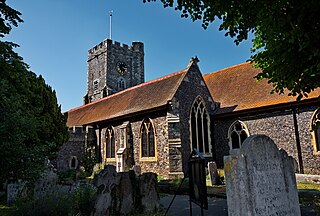
St Peter's is an area of Broadstairs, a town on the Isle of Thanet in Kent. Historically a village, it was outgrown by the long-dominant settlement of the two, Broadstairs, after 1841. Originally the borough or manor of the church of St. Peter-in-Thanet, it was said to be the largest parish east of London, at least until Broadstairs became a separate parish on 27 September 1850. The two settlements were formally merged administratively in 1895.


